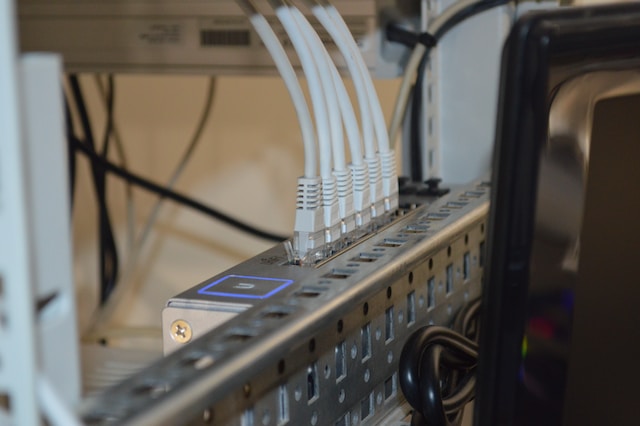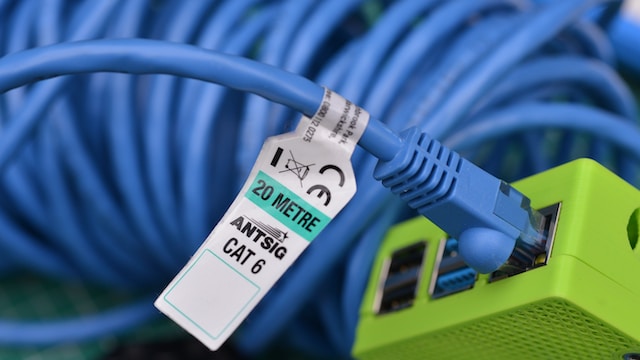PAT translates public IP addresses to private IP addresses, while NAT replaces the public IP address with a single shared address for all computers connected to the network. While both are important parts of network security, it is important to note that if you have more than one computer on your network, then you will need a NAT router in order to keep them secure.
What is PAT?
(Image by bschut from Pixabay )

In computer networking, PAT stands for Port Address Translation. It is a technique used by network address translators (NATs) to map multiple private IP addresses to a single public IP address by using different ports.
PAT works by assigning a unique port number to each private IP address in the network, allowing multiple devices to share a single public IP address. When a device on the network sends data over the internet, the NAT router modifies the source port number in the outgoing packet to a unique number assigned to that device. When the response is received, the router uses the destination port number to send the packet back to the correct device on the network.
PAT is commonly used by home and small business networks to enable multiple devices to share a single internet connection, without the need for multiple public IP addresses. It is also used by internet service providers to conserve public IP addresses and reduce the load on their network infrastructure.
Overall, PAT is an important technique for enabling efficient use of IP addresses and allowing multiple devices to communicate over the internet using a single IP address.
What is NAT?
(Photo by Thomas Jensen on Unsplash )

Network Address Translation (NAT) is a technique used in computer networking to map one IP address space into another by modifying network address information in the IP header of packets while they are in transit across a traffic routing device.
NAT is commonly used to enable multiple devices in a private network to share a single public IP address, allowing them to communicate with devices outside the network. When a device in a private network sends a packet to a device outside the network, the NAT router modifies the packet’s source IP address to its own public IP address, allowing the packet to be routed to its destination. When a response is received from the destination, the NAT router modifies the destination IP address in the response packet to the original source IP address of the private device and forwards it back to the original sender.
NAT can be used in different ways, such as Static NAT, Dynamic NAT, and Port Address Translation (PAT). Static NAT is used when a device in a private network needs a fixed public IP address, while Dynamic NAT assigns public IP addresses dynamically as needed. PAT, as mentioned in a previous question, maps multiple private IP addresses to a single public IP address by using different ports.
NAT is widely used in home and small business networks, where it enables multiple devices to share a single internet connection without the need for multiple public IP addresses. It is also used by internet service providers to conserve public IP addresses and reduce the load on their network infrastructure.
PAT Vs. NAT – Key Diffeences
PAT (Port Address Translation) and NAT (Network Address Translation) are both techniques used in computer networking to map private IP addresses to public IP addresses, but they differ in how they map multiple private IP addresses to a single public IP address.
NAT works by modifying the network address information in the IP header of packets while they are in transit across a traffic routing device. When a device in a private network sends a packet to a device outside the network, the NAT router modifies the packet’s source IP address to its own public IP address, allowing the packet to be routed to its destination. When a response is received from the destination, the NAT router modifies the destination IP address in the response packet to the original source IP address of the private device and forwards it back to the original sender.
PAT, on the other hand, maps multiple private IP addresses to a single public IP address by using different ports. When a device in a private network sends a packet to a device outside the network, the NAT router modifies the source port number in the outgoing packet to a unique number assigned to that device. When the response is received, the router uses the destination port number to send the packet back to the correct device on the network.
In summary, while both NAT and PAT are used for the same purpose of mapping private IP addresses to public IP addresses, they differ in how they handle multiple private IP addresses. NAT modifies the IP address information in packets while PAT uses port numbers to differentiate between multiple devices sharing a single public IP address.
When to use PAT?
Port Address Translation (PAT) is typically used in situations where multiple devices on a private network need to share a single public IP address. It allows multiple devices to connect to the internet without requiring a unique public IP address for each device.
PAT is commonly used in small to medium-sized businesses and homes, where there are multiple devices such as computers, smartphones, and gaming consoles that need to access the internet through a single public IP address. PAT enables these devices to communicate with servers and devices on the internet while keeping the private IP addresses of the devices hidden from the public internet.
Some specific situations where PAT may be used include:
- When a company needs to provide internet access to a large number of devices in a private network, but has only one or a limited number of public IP addresses available.
- When a small business or home network needs to share a single public IP address among multiple devices to reduce the cost of obtaining multiple public IP addresses.
- When a company or organization needs to provide access to remote users or employees to internal resources such as email, file servers or applications, and wants to use a single public IP address to minimize the security risks and reduce the complexity of configuring remote access.
PAT is an effective and cost-efficient solution for enabling multiple devices to share a single public IP address while providing access to resources on the internet.
When to use NAT?
Network Address Translation (NAT) is a widely used technique in computer networking for translating private IP addresses to public IP addresses. NAT is used in situations where private IP addresses need to be used for internal communication within a network, while public IP addresses are used for communication with the outside world.
Some specific situations where NAT may be used include:
- Home networks: NAT is used in home networks to allow multiple devices to share a single public IP address provided by the Internet Service Provider (ISP). This helps to reduce the number of public IP addresses required by the ISP and minimizes the costs for the end-users.
- Business networks: In a corporate environment, NAT is used to enable internal hosts with private IP addresses to access the internet and external resources. This helps to protect the internal network from external threats and reduce the need for public IP addresses.
- Cloud computing: NAT is also used in cloud computing environments to allow virtual machines to access the internet and external resources while keeping their internal IP addresses hidden.
- IPv4 to IPv6 transition: NAT is used as a technique to transition from IPv4 to IPv6, where IPv4 private addresses are translated to IPv6 addresses.
NAT is used in situations where a private network needs to access resources on the internet or communicate with external networks using a single or limited number of public IP addresses. NAT provides security and helps to reduce the number of public IP addresses required by the network.
What are the 3 types of NAT?
There are three types of NAT: Static NAT, Dynamic NAT, and Overlapping NAT.
Static NAT: A static NAT mapping is a one-to-one mapping between a private IP address and a public IP address. This means that the same public IP address is always mapped to the same private IP address. This is useful for servers that need to be accessible from the Internet, such as a website.
Dynamic NAT: A dynamic NAT mapping is a one-to-many mapping between a private IP address and a public IP address. This means that different private IP addresses can be mapped to the same public IP address. This is useful for clients that need to access the Internet, such as when you are browsing the web.
Overlapping NAT: An overlapping NAT mapping is a many-to-many mapping between a private IP address and a public IP address. This means that multiple private IP addresses can be mapped to multiple public IP addresses. This is useful for when you have multiple clients behind a single NAT router that need to access the same resources on the Internet, such as when you are playing an online game with friends.
Can NAT and PAT be used together?
Yes, NAT and PAT can be used together. This is often done when an organization has a private network that they want to keep secure from the outside world, but they also need to allow some communication with the outside world. By using both NAT and PAT, the organization can hide the details of their private network while still allowing the communication that they need.
Featured Image By – Gavin Allanwood on Unsplash








